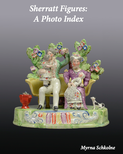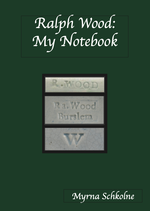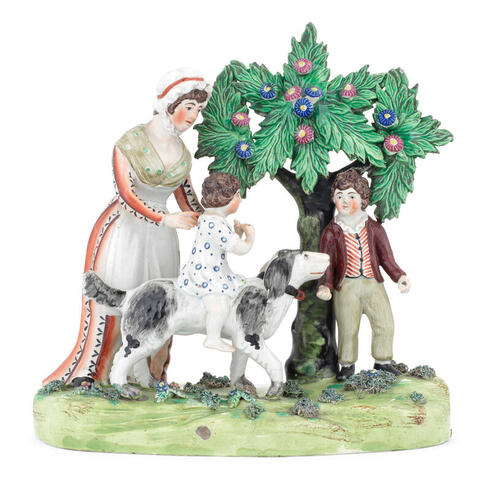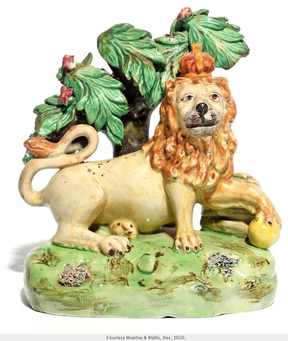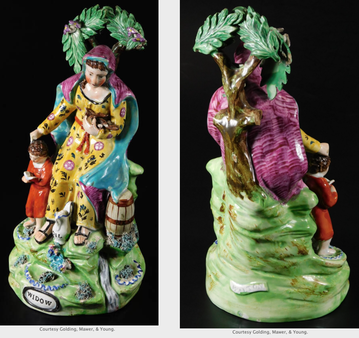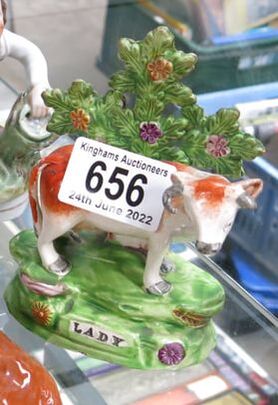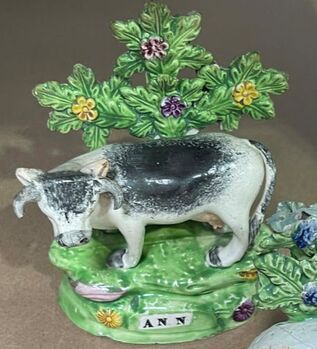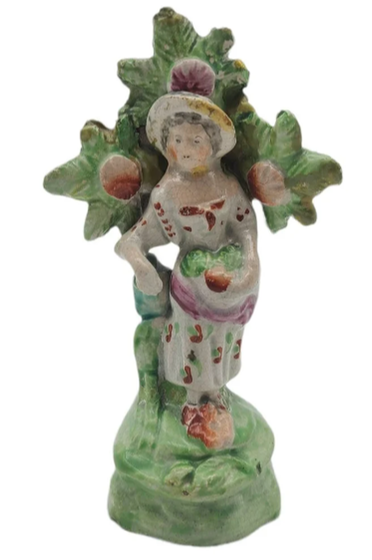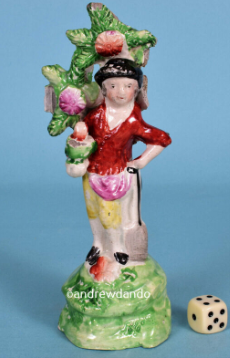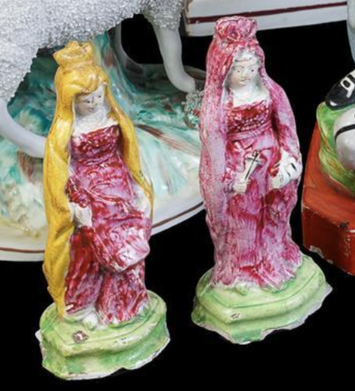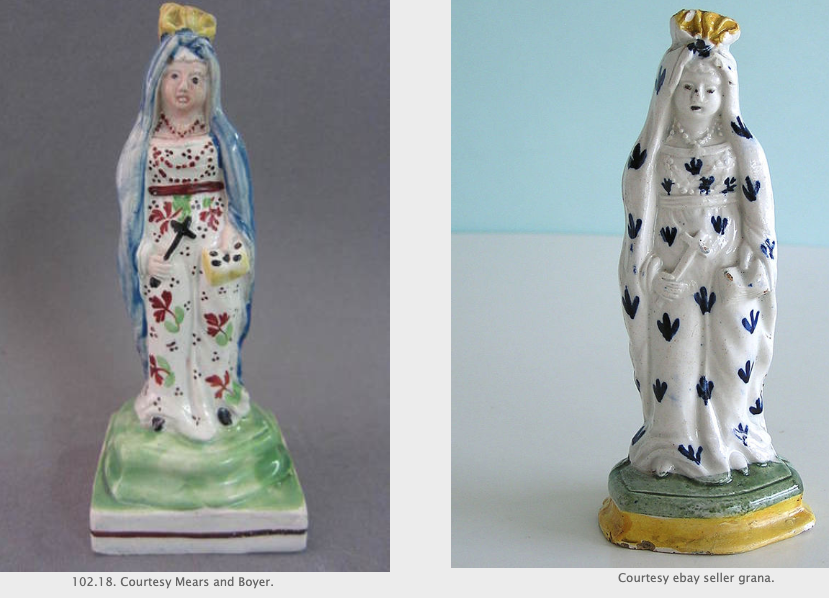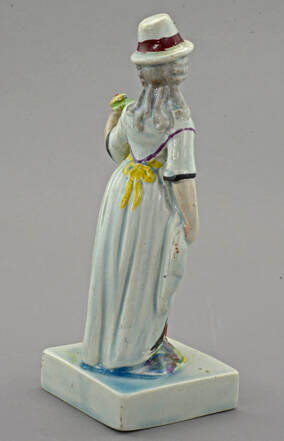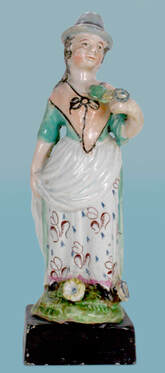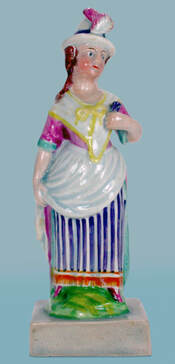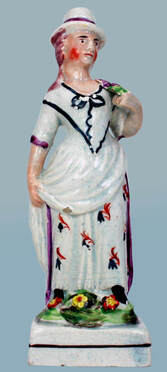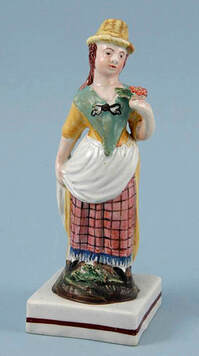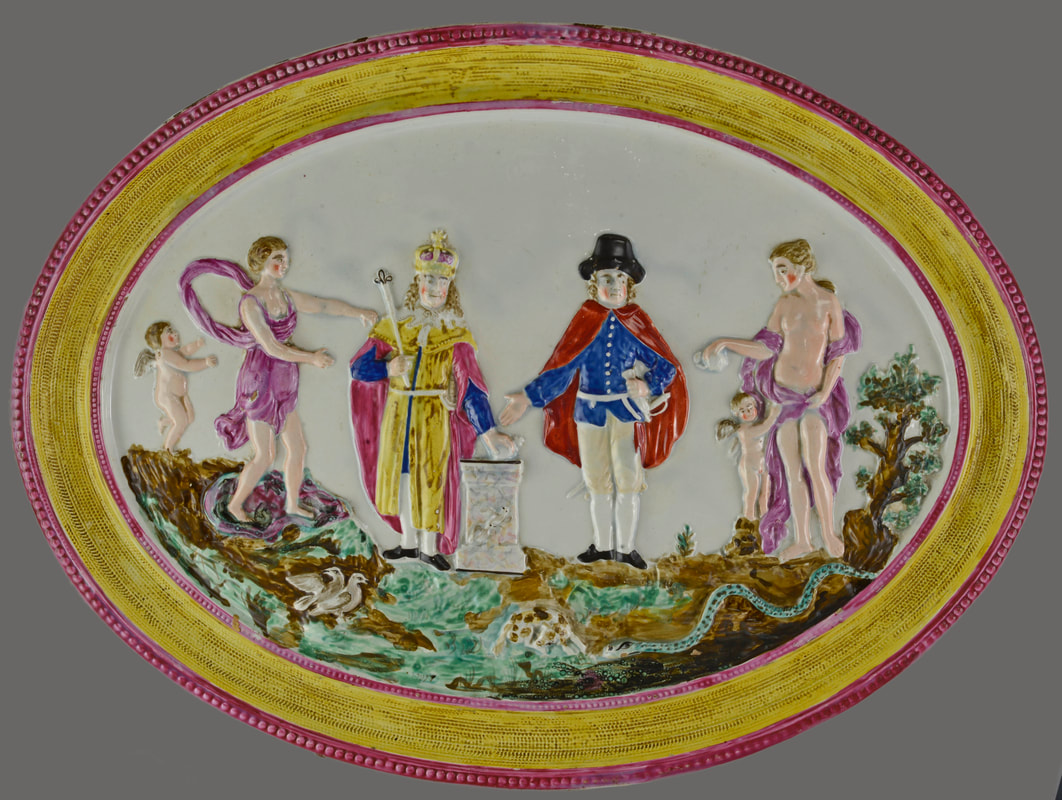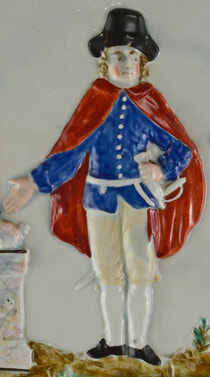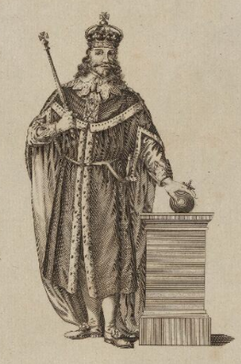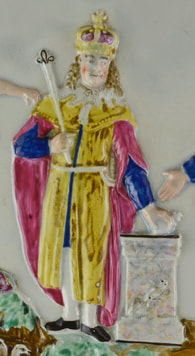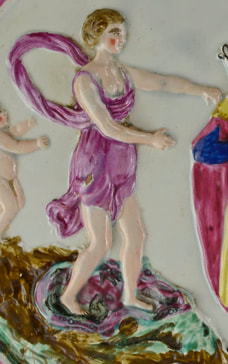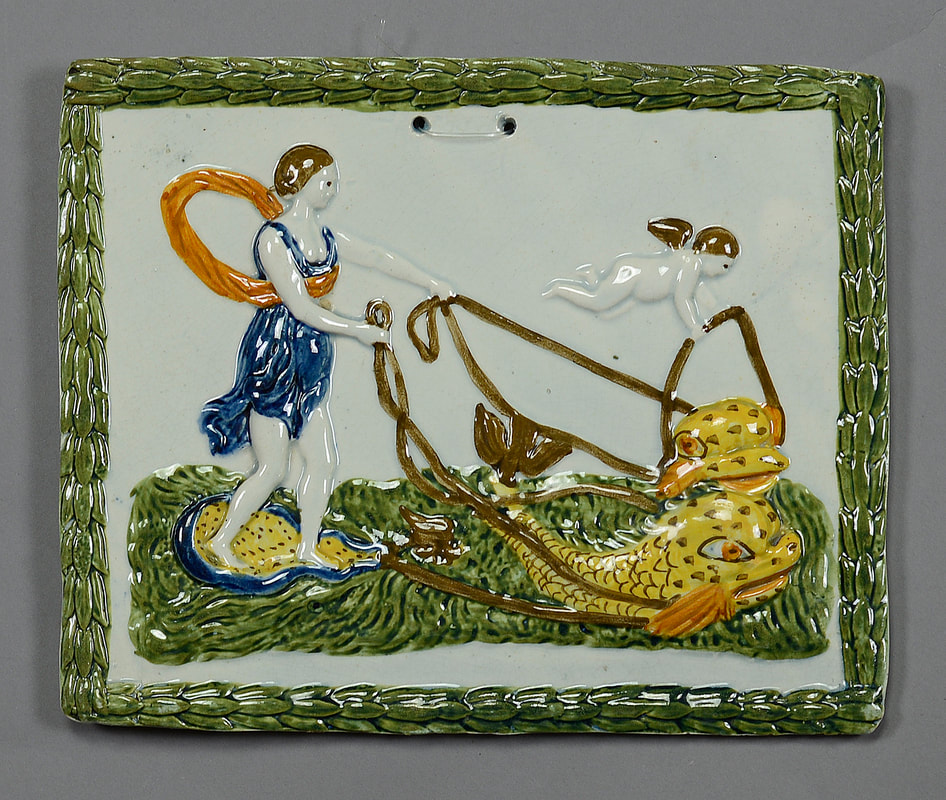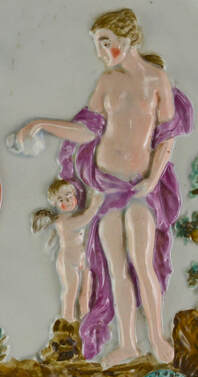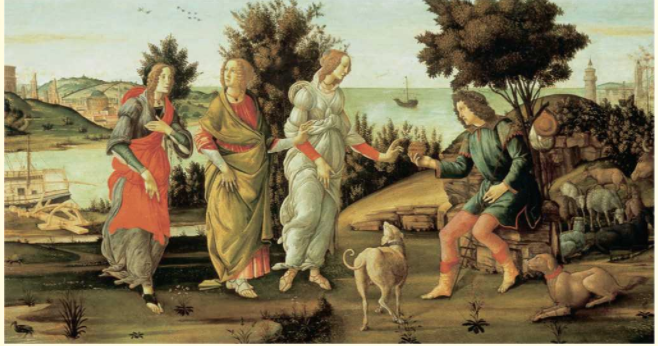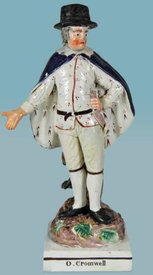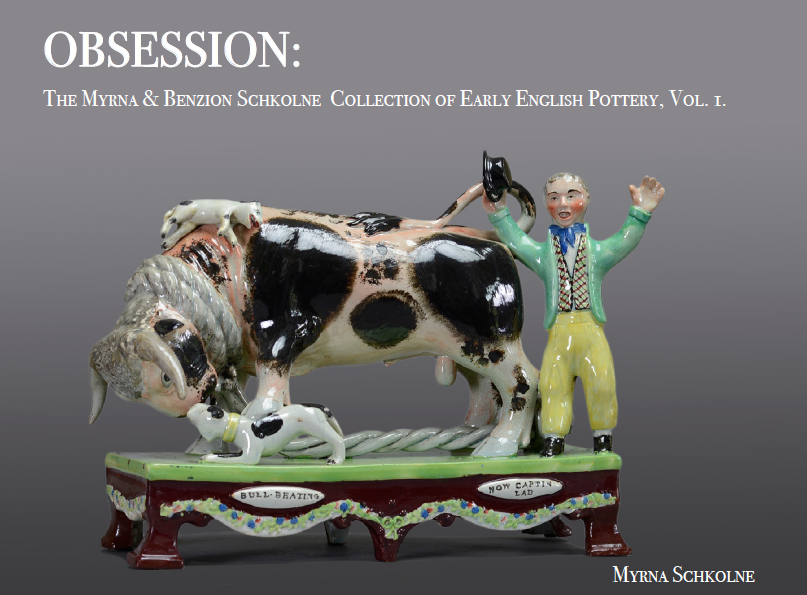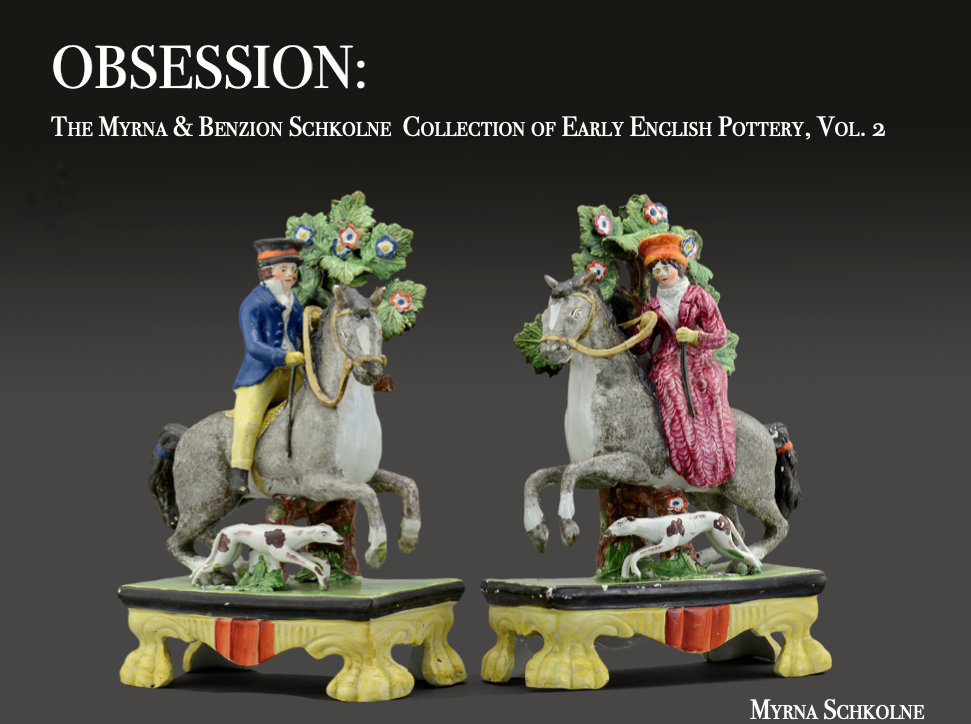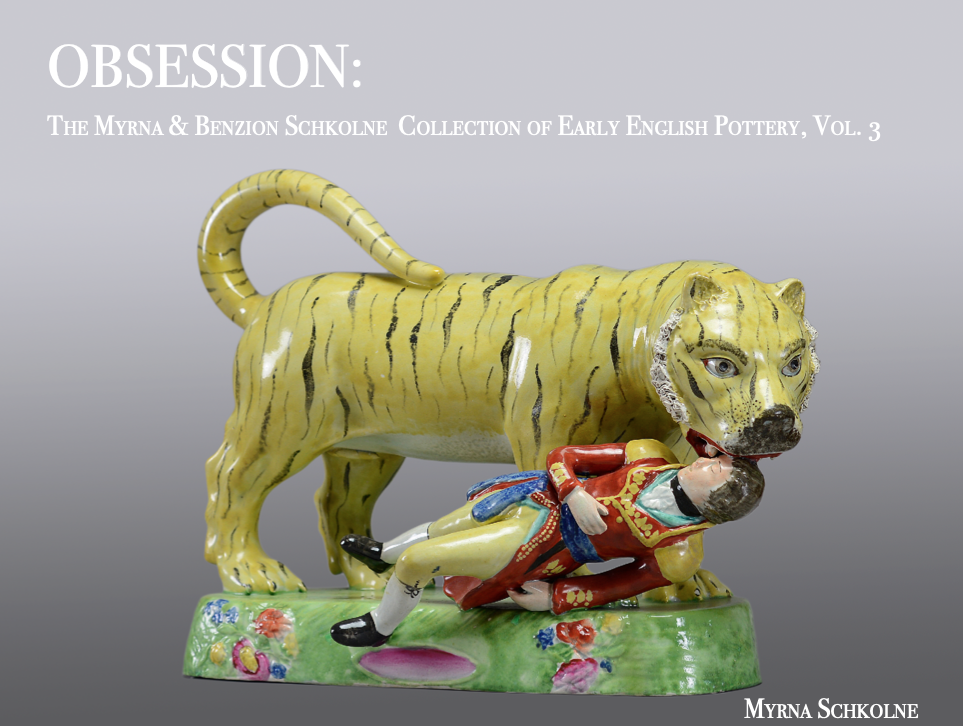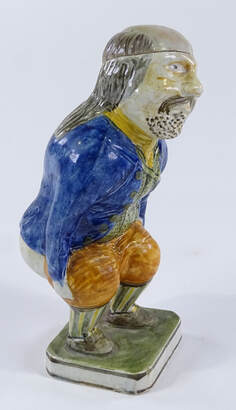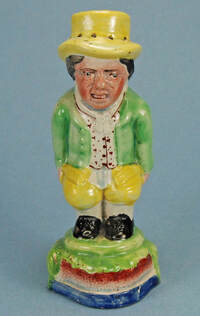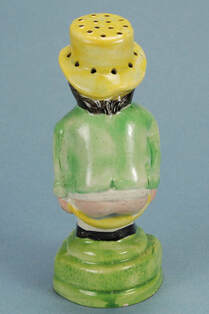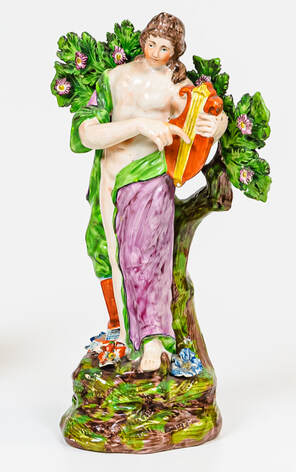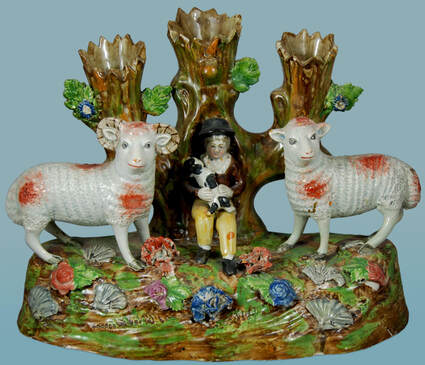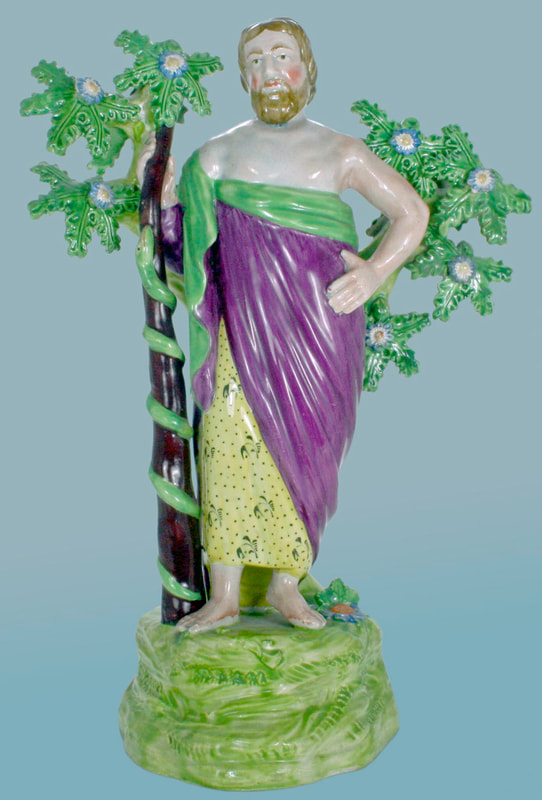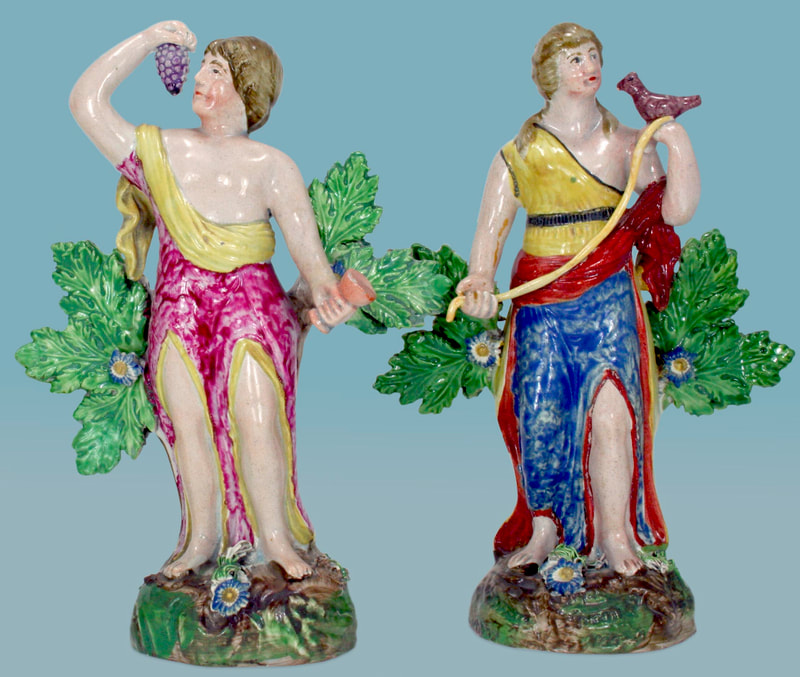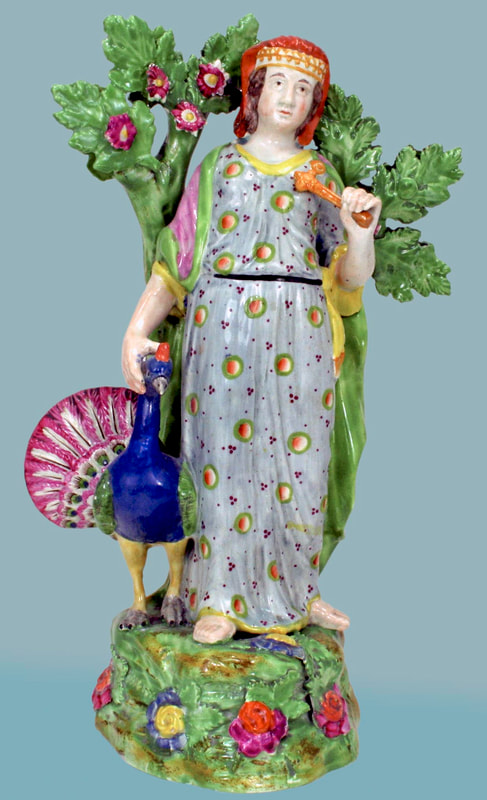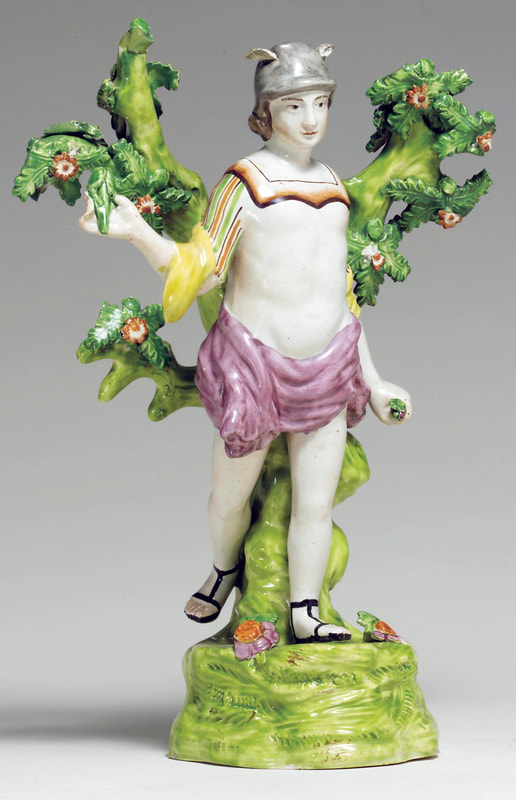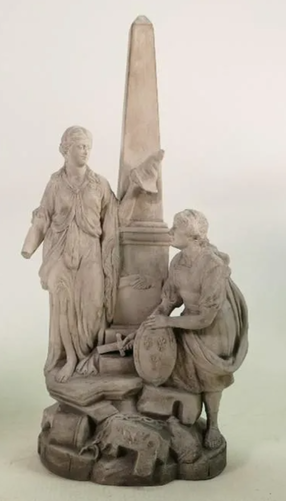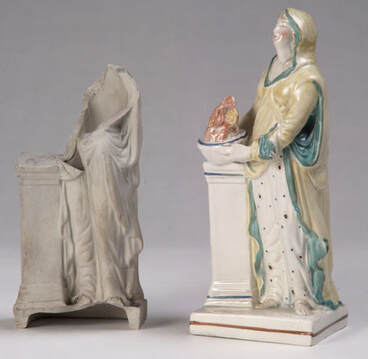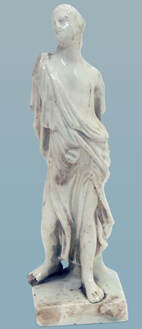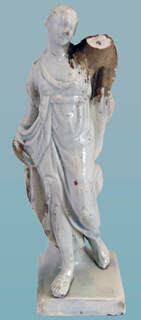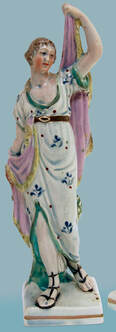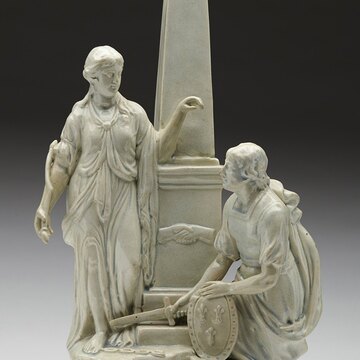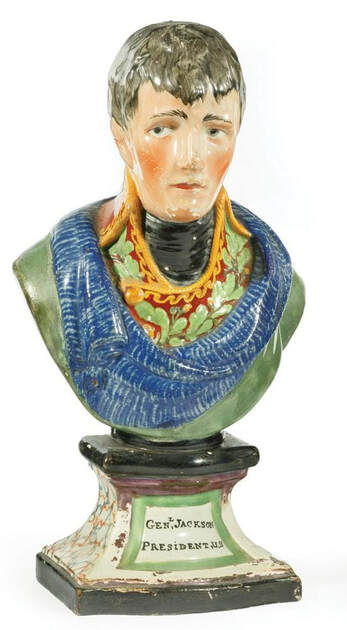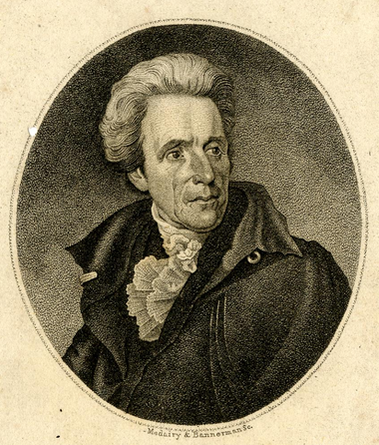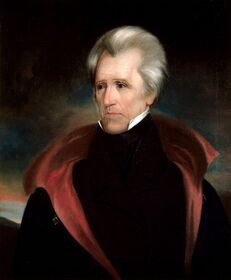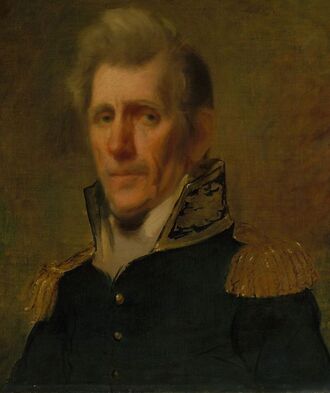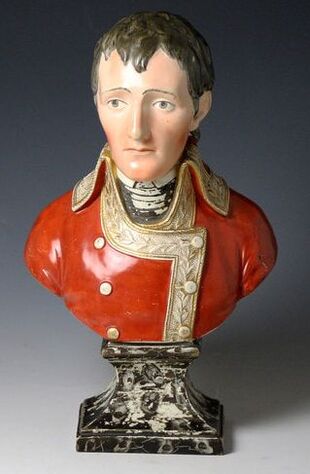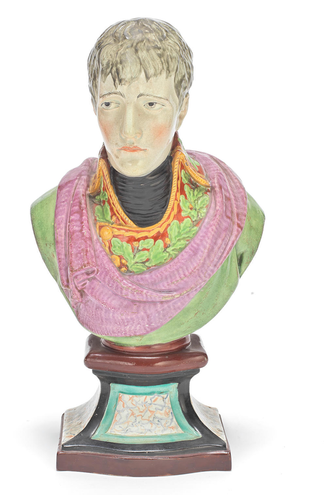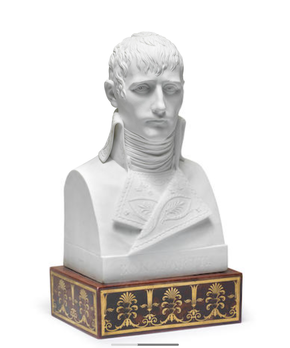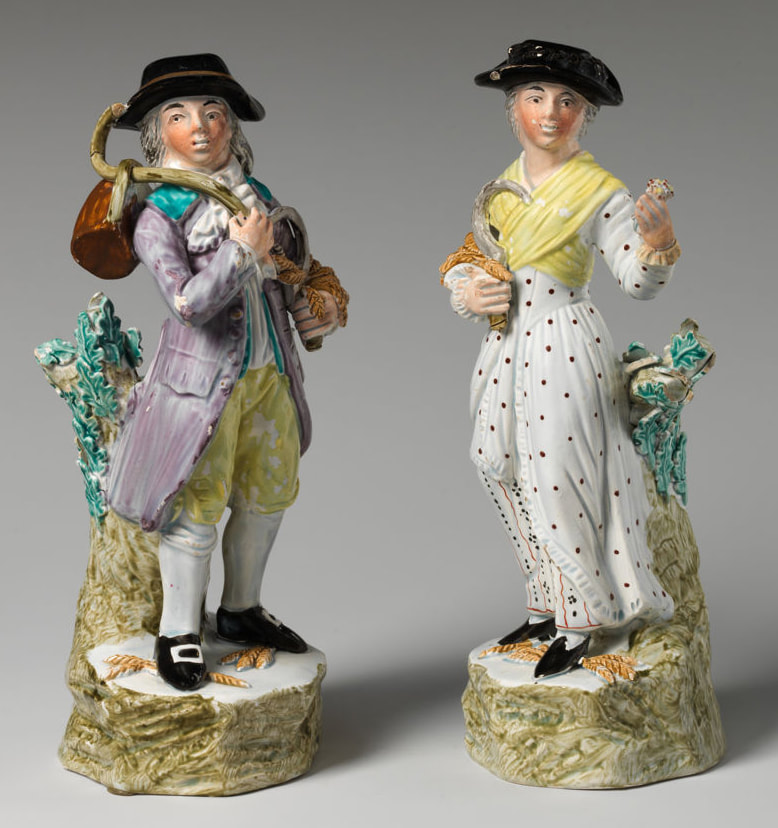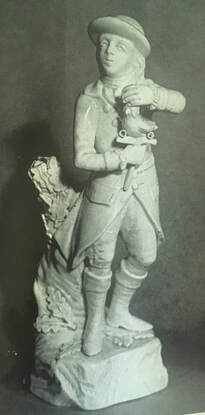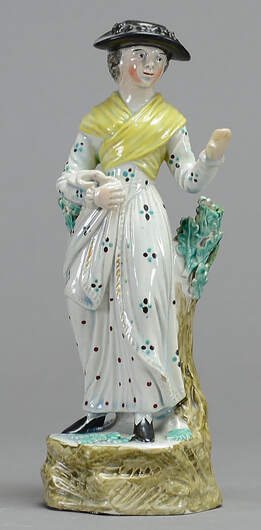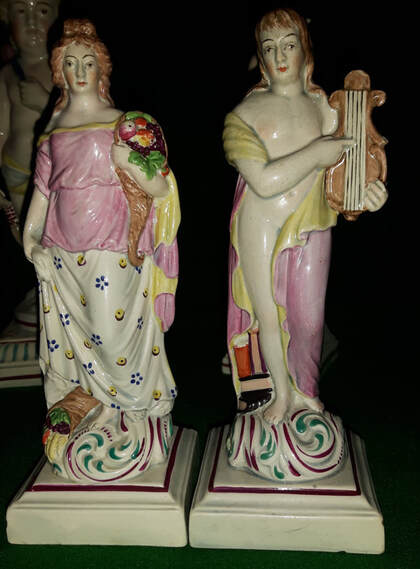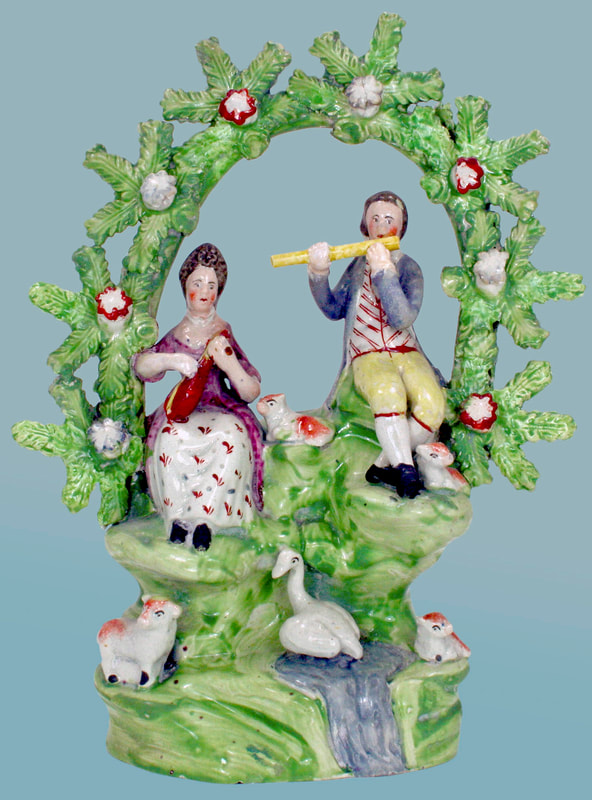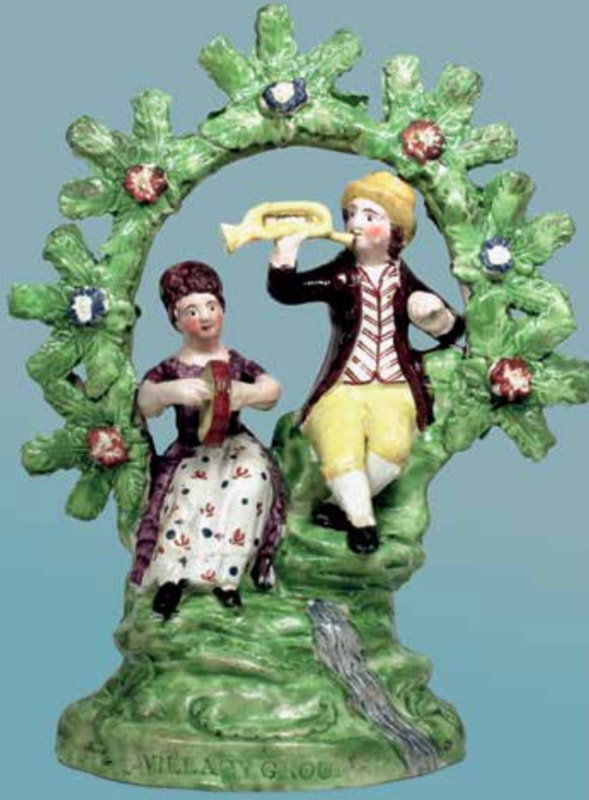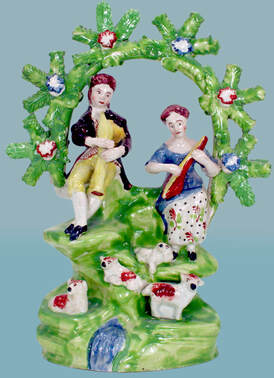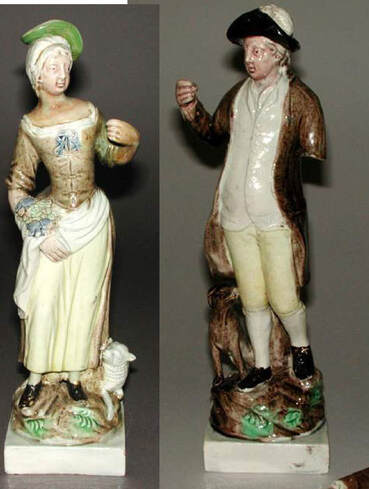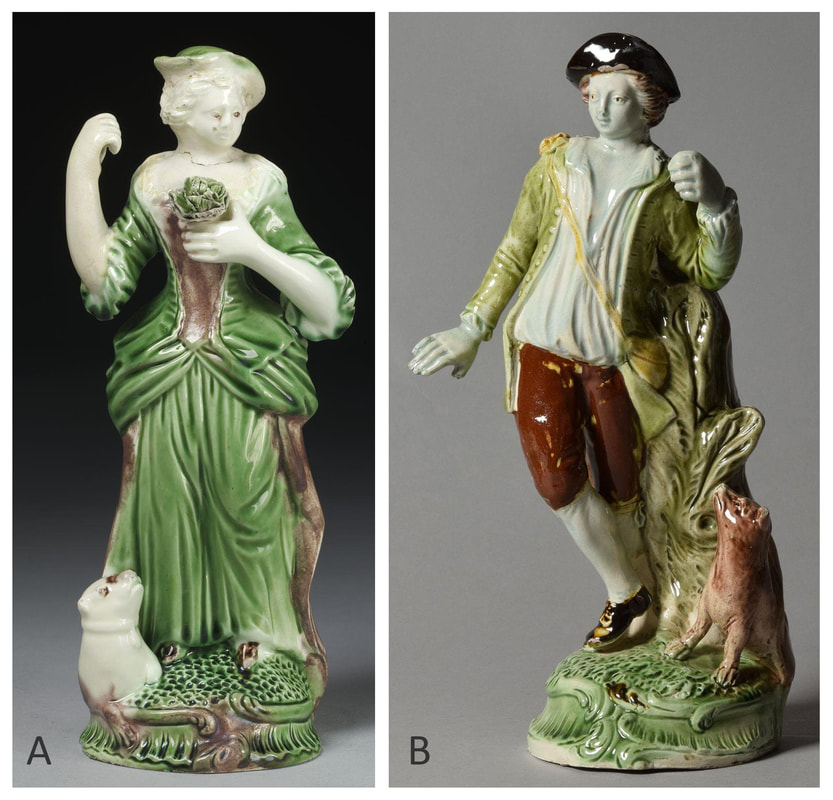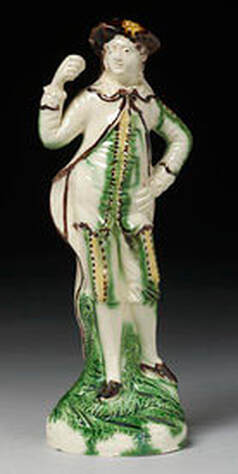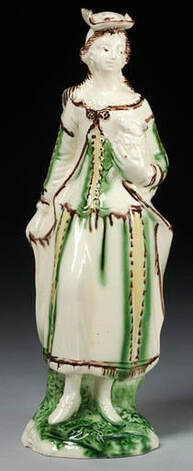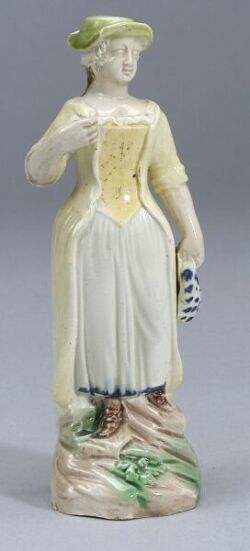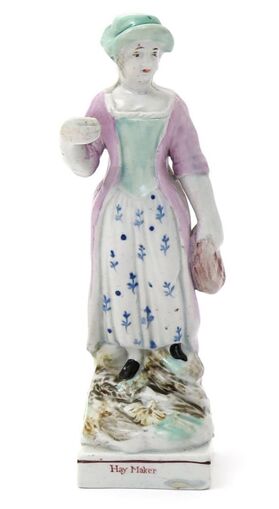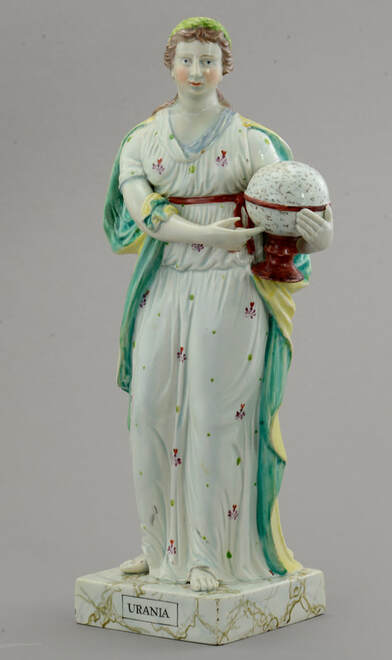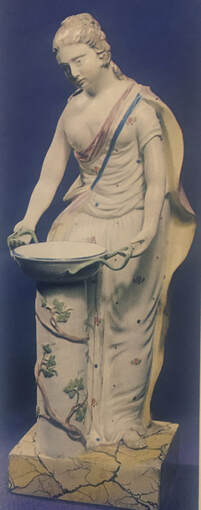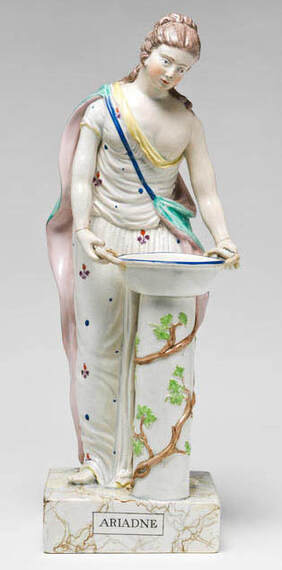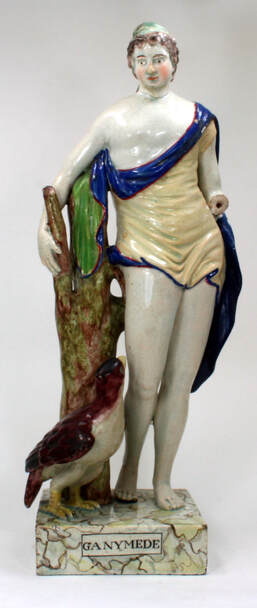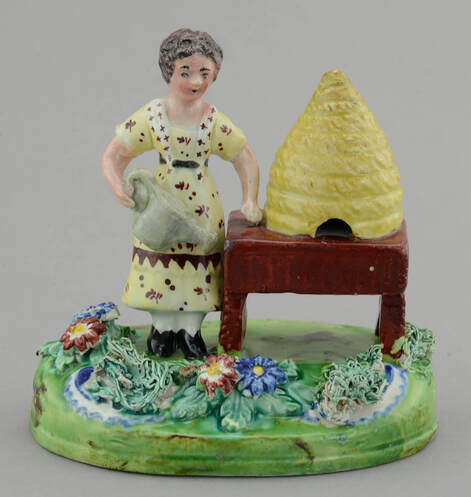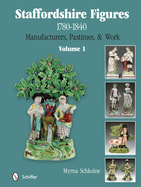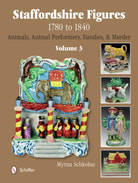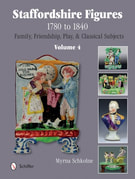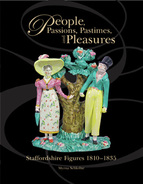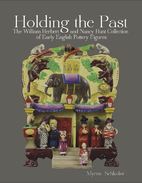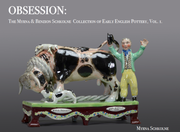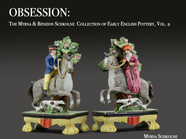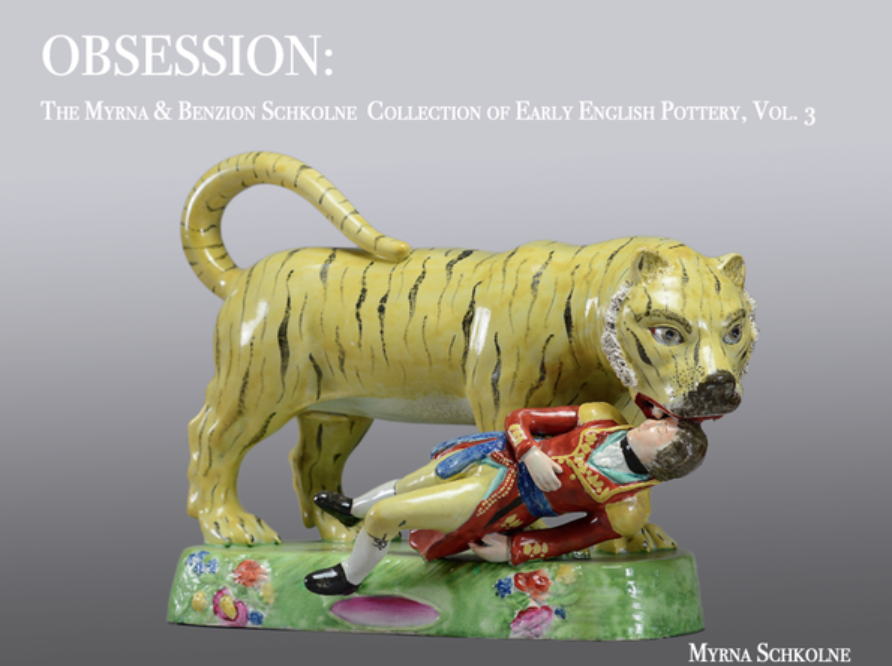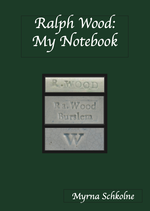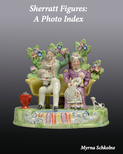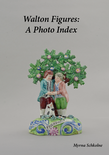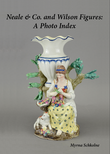In 1991, Malcolm and Judith Hodkinson published Sherratt? A Natural Family of Staffordshire Figures. Their groundbreaking work included an alphabetical listing of Sherratt models illustrated with small black and white images. In the ensuing thirty-plus years, further models have, of course, come to light, and for that reason I have assembled an updated photo record. It is available as a free download on the BOOKS menu at the top of this page or click here.
|
Those of you who collect early figures purely because they are eye-candy will be able to gorge on my latest effort, which includes very sparse text and tons of glorious color images.
In 1991, Malcolm and Judith Hodkinson published Sherratt? A Natural Family of Staffordshire Figures. Their groundbreaking work included an alphabetical listing of Sherratt models illustrated with small black and white images. In the ensuing thirty-plus years, further models have, of course, come to light, and for that reason I have assembled an updated photo record. It is available as a free download on the BOOKS menu at the top of this page or click here.
0 Comments
I have compiled much of what I have learned about Ralph Wood figures into a notebook, which is available for free download on the BOOKS tab at the top of this page. Ralph Wood was the Father of the British figure making industry, and I find his figures endlessly fascinating. I know many will consider this a nerdy topic, so those wanting only a list of the numbered models should start on page 19.
When there is nothing worth saying, it is always best to keep silent. For that reason, this blog has been quiet these many months. I have already covered so much material here in the past fifteen years, and next to nothing else of note has appeared on the market of late. Admittedly, gorgeous pieces of great rarity do exist, but they seem to be glued to collectors' shelves. The most exciting group to pop up this year is the stunning one below. The eye-catching bocage on this group is very uncommon, and, best of all, in this instance it is in outstanding condition. Figures with this bocage are few and far between, and when I was working on Staffordshire Figures 1780-1840, I had no basis for attributing them. My gut suggested Walton, but waving the flag for Walton or any other potter is treacherous without hard facts to back up the attribution. As luck would have it, in the last three or so years, two figures with this very bocage have come to light, both MARKED Walton, so the attribution finally stands on terra firma. Shown below, they are a lion and a Widow, both sporting this bocage form and John Walton's mark. I delve through a lot of junk on the internet each week, always in the hope of finding something new or different. In June, I was tickled to see this cow at auction. At first glance, she is a pretty yet rather ordinary beast, but her name, LADY, impressed on the front makes her special. A friend and I exchanged emails, jokingly suggesting names for the companion bull. We only had to wait till September to learn that the companion was a cow rather than a bull, and her name is ANN. These animals came to auction at the same auction house, three months apart. I assume they came from the same source, and, if that is the case, to my mind splitting them into different lots at the same auction would have been very sad, but placing them in different auctions months apart was stupid and tragic. I am pointing no finger at the auction house because the fault may well lie with the consignor. I do hope that the same bidder acquired both LADY and ANN so they can spend their days side by side once more. I am always on the lookout for figures that help me or others complete pairs. The little gardener lady on the left caught my eye recently. She is a humble purchase on Etsy, and, if you own the man alongside, sold by Andrew Dando some years ago, you may want to buy her to complete the pair. Lastly, I am a little puzzled as to the identity of these two figures. They differ only in the objects that they hold The figure on the right, above, is thought to be St. Margaret, the pearls she wears being critical to that identification. Below are two other figures of St Margaret. As the figure in the pink dress on the left also wears pearls, might she too be St. Margaret? I doubt it, but I am out of my depth, so if you know the answer, please shout.
Sadly, small figures routinely fly under the radar because collectors all seem to prefer trophy additions to their collections. This little lady might have slipped into oblivion had Andrew Dando not rescued her and brought her to my attention. The blue-tinged glaze puddling on the base is fabulous, is it not? But the enameled decoration is particulary interesting and strongly reminiscent of that found on Ralph Wood figures. Experienced collectors ALWAYS immediately turn over a figure to scrutinize the underneath, which can reveal a wealth of nuanced information. In this case it delivered an added surprise: an unrecorded mark! "Wood." The first name that comes to mind is that of Ralph Wood, the father of English figure pottery, who was active as a potter from 1782 to 1795. Might he have made this figure? The combination of rainbow colors on the mound beneath the figure is very, very typical of Ralph Wood, and I have until now only seen mounds colored thus on figures with a Ralph Wood attribution Also, the lady's face is painted in a typical, delicate Ralph Wood style. If you organize figures into groups by their pot bank of origin, there is a striking family resemblance within each group. A Neale face is very different from a Lakin & Poole face or a Ralph Wood face. The difference sometimes is in the modeling, but it is very often in the decoration. Each manufacturer had a "house style" that painters followed. By now we all know that when Ralph Wood's painters placed lines around bases, the lines banded three sides of each base, with the back typically left plain. On this figure, the line is on one side only. Make of it this what you will. Did the painter intend placing more lines? Did he get confused? Was it a Monday--a day that invariably started with a hangover? Who knows? Then there is the manner in which the base was formed. Looked at from beneath, it has rounded internal corners. Nearly all Ralph Wood bases are formed in this manner, whereas the bases of figures made by Wood's contemporaries are usually formed differently. And finally there is the mark itself. Ralph Wood consistently impressed the mark into the clay bodies of his figures, but this mark is painted. Wood's painters used tiny red letters to title very many figures, and the "Wood" mark is in tiny red letters. However, the letters are different to the "house style" used for Ralph Wood titles. Note the "W" consists of two Vs, and the "d" has a long curly handle. What other Wood might have made this figure? The names of Enoch Wood and John Wood pop to mind. For about twenty years, a whacky theory credited them with making all the Ralph Wood figures---yes, even those with Ralph Wood's name impressed into their clay bodies! Fortunately, that theory has been resoundingly debunked, but museums that lack knowledgable curatorial staff (and updated libraries, it seems) persist in stupidly crediting Ralph Wood figures to Ralph's cousin Enoch Wood or to his brother John Wood. But there is no evidence that John Wood made any figures at all. Enoch Wood made figures, but they are in a very different style to the little lady in question. Bottom line is that my heart tells me that this is a Ralph Wood figure. I would bet money on it if I could--and I am not a betting person. But my head must rule, and I admit that there is inadequate evidence for a water-tight attribution. I can't tell you how much time I have spent looking at her and pondering. She has added enormously to my collecting pleasure. By the way, the molds for this figure, like other Ralph Wood molds, circulated in the Potteries for decades, and other potters made their own versions. Not one has a single Ralph Wood attribute. Image at bottom right is courtesy of Andrew Dando.
Oliver Cromwell (1599-1658) was the Protestant general who overthrew England’s ruler, King Charles I (1600-1649). A deeply religious man, Cromwell believed God led him to victory, so I guess he also thought God wanted him to sign King Charles’s death warrant, and the unfortunate monarch succumbed to the executioner’s sword. The story of the rise and fall of England’s short-lived Commonwealth is well known, so I shan’t belabor it here, but Cromwell and King Charles resurfaced in English figure pottery well over a century later, standing side by side on this huge plaque. Breathtakingly beautiful, it measures almost fourteen inches across. A plaque in a blog devoted to figures may surprise you, but plaques with relief figural forms are, to my mind, figures too. I find them particularly gorgeous because light dances across their glazed flat surfaces in a way that just is not possible on conventional figures. And when the plaque is as large as this one, the result is mesmerizing. Each plaque, like each figure, tells a story, but this plaque is a brain teaser that raises numerous questions. Why give Cromwell a passing thought some 160 years after his death? When King Charles II reclaimed the throne his father had relinquished, he disinterred Cromwell’s body, publicly hanged and then beheaded it, and placed the head on a spike for all to see. But, as modern day protestors have yet to learn, you cannot erase history, and in time Staffordshire potters turned their attention to Cromwell and his ill-fated victim. What probably got the potters’ creative juices flowing was this engraving of Cromwell after a drawing by Samuel Wale, the eighteenth century historical painter and book illustrator. It appeared in George Frederick Raymond’s “A New, Universal and Impartial History of England” that was first published in serial form in the late 1780s. Wale was probably guided by an earlier painting of Cromwell, but, to my eye, much was lost in the translation. Anyway, as it was all that potters had to go on, they made do. Also courtesy of Samuel Wale is this engraving of King Charles, orb and scepter in his regal hands and his head still upon his shoulders. It clearly is the design source for figure of Charles on the plaque. What of the classical maidens to either side of the king and his persecutor? Collectors today overlook classical figures, but, to my mind, they are endlessly fascinating, and the damsels on this plaque are no exception. The figure on the left is the sea nymph Galatea. The raised scarf is the give-away because Galatea is routinely portrayed in art with a raised scarf. Her story goes like this: Galatea, fleeing from her jealous lover, travelled on the ocean in a shell drawn by sea creatures, and her scarf caught the wind and acted as a sail. On the plaque, Galatea, balancing on her shell, taps Charles on the shoulder, signaling the need to flee. On the underglaze plaque below, you see a fuller version of Galatea's tale. The figure on the right too has a story to tell. She is the goddess Eris. In Greek her name means strife, and she was the goddess of discord. Miffed at not being invited to a wedding, Eris gate-crashed the event and tossed down an apple with the words “to the fairest one” inscribed on it. The apple—appropriately known as the Apple of Discord—resulted in a beauty contest, and Paris of Troy was left with the task of deciding whether to award the apple to Athena, Hera, or Aphrodite. Paris could not win this one! Never underestimate the fury of a woman scorned. The resulting conflict led to the legendary ten-year Trojan War. On the plaque, Eris stands with the Apple of Discord in her hand. She symbolizes the discord between Cromwell and King Charles. The same motif also occurs on the plaque below, where Paris awards the apple to Aphrodite. It was probably inspired by a painting, perhaps Botticelli’s beautiful portrayal of the Judgment of Paris. The potter skillfully reworked the motif used for Aphrodite so that the female figure stood alone, apple in hand…and presto! she became Eris. Or perhaps it was the other way around, and the potter transformed Eris into Aphrodite. What about the animals in the foreground of the plaque? I am somewhat stumped. Perhaps the birds are doves, signifying a hope for peace. The huge serpent surely symbolizes evil, no doubt a reference to Cromwell’s dastardly deeds. As for the dog, apparently sleeping and oblivious to all around him, I have no idea---but I shall be thinking about it. I notice that the same dog is on the plaque of the Judgment of Paris, so perhaps the potter included it simply because he had a mould at hand.
So the King, the man who usurped England’s throne, discord, and flight, all in one eyeful. This plaque packs a powerful punch. PS: For completeness, I add that small pair of underglaze decorated plaques in the Wolverhampton Museum & Art Gallery is illustrated in Lewis, Pratt Ware, pp. 114-115. One has a relief of Cromwell, another of King Charles. The plaques are not accessible on the museum's web site. I surmise that these little treasures, like so many others, are buried and forgotten in museum storage. I have updated my three volumes of my eBook, Obsession, to reflect changes in our collection and advances in my knowledge. The book is available for free download on my Books menu on this site.
As 2021 fades with a whimper, I look back on the extraordinary figures that have crossed my path. The variety that emanated from Staffordshire kilns is seemingly endless. I confine my collection to enamel-painted figures. If not, I would have had to bid on this remarkable underglaze-decorated figure of Roger Giles. Roger Giles was a Devonshire schoolteacher and jack-of-all-trades. His claim to fame rests is that he advertised for sale fresh eggs “new laid by him every day”. Staffordshire figure potters fashioned crudely comical figures of a squatting gentleman that are said to represent Giles laying those eggs. They were made well into the Victorian era, and nasty fake-similes persist today, but a pre-1840 Roger Giles can prove elusive. Add to that, some can be a tad too vulgar for my taste. Below is my Roger Giles, made by the "Sherratt" pot bank. Like others of his ilk, he has holes in his hat, so perhaps he was intended as a pepper pot or hat pin holder. Like most, he is about 4.5 inches tall--significantly smaller than the gentleman at the top of this post. At a good 8 inches, that Roger Giles is by far the biggest I have seen, and the top of his head is removable (is he a jar?). He oozes personality, and I am pleased he has found a home in a remarkably interesting and fine collection. Another unrecorded figure that quietly changed hands recently was this gem that went through auction in a lot with another. Described as a "figure playing a lyre," he is Apollo, but given the girly hairstyle (not to mention our "Woke" world), the description was probably intentionally gender-neutral. What is interesting about Apollo is that he can be attributed to John Dale. The distinctive bocage flowers nail the attribution, and the decoration of the base is rather like that on other Dale figures. These same Dale features (and others) are apparent on the spill vase below. (See Staffordshire Figures 1780-1840, vol.1 for Dale attributes.) John Dale was active as a potter from 1818, and Apollo looks like a circa 1820s figure. Dale made other classical figures in the same style (with various but typical Dale bocages and bases), as recorded in Staffordshire Figures 1780-1840, vol.4. From top left they Aesculapius, Bacchus, Venus, Juno, and Mercury. Today, all are particularly rare and are known from one or two examples at most. Click each image to enlarge. Clearly there was a significant market for classical figures in the 1820s, yet collectors tend to relegate those figures to earlier decades. How wrong that would be, and a message from the grave hammers home that lesson. Let me explain. The enamels on this figure group of Peace below suggest it was made in the 1790s. On the base are a helmet and other implements of war as well as a broken chain, all of which symbolize the fight for freedom. The male figure holds a shield decorated with the fleur-de-lys of the French monarchy, and he is laying down his arms at the feet of the the female, who is Peace. She is offering him a Liberty bonnet. Clasped hands of fraternity are on the obelisk, so the group has been interpreted as suggesting or commemorating a peaceful resolution of the French Revolution. Given that, a date in the 1790s seems appropriate for this group. As the French revolution was finite, one would have expected this model to have outlived its usefulness by 1800. Would you even consider dating an example to the 1820s? No? Think again! Fast forward to 1974, and this unpainted group, from the same molds, was unearthed in Staffordshire. (The helmet probably went the way of the lady's arm!) The potter Enoch Wood was a great recorder of the events of his day. For that purpose, he buried caches of his pottery for future historians to find. When the foundation of St. Paul's Church, Burslem, was laid in 1828, Wood left a cache beneath it. Included was this group of Peace. A demolition contractor unearthed it in 1974, and it came to auction last year. No saying for certain when it was made, but I strongly suspect it was made in the 1820s rather than the 1790s. Also in the cache was a shard corresponding to a figure of Medea, as seen below. Again, it seems reasonable to conclude that as the shard was made in the 1820s, the figure may have been made then too. While there is no hard line in the sand, classical figures on square bases with a line are assumed to predate 1815. Enoch Wood's legacy does not end there. In 1938, a cache of his wares was unearthed beneath the Burslem Old Town Hall. From their subject matter, they date to the 1820s. Among them were shards of classical figures of Bacchus and Ariadne that, like Medea, we might have relegated to an earlier period based on their bases, their designs, and their subject matter. The shards are below. Alongside the shard of Ariadne is a figure corresponding to it. Does that mean that all examples of Bacchus and Ariadne from these molds date to the 1820s? Not at all. Rather, it means that we have to broaden our time horizon. We must look beyond square bases to determine a date. The mode of decoration and the colors of the enamels can be very helpful. The soft turquoise enamel on Ariadne was in great favor in the 1790s, but that is not enough to assign a date with confidence. Turquoise had no sell-by date, and it certainly may have been used for a lot longer. I only know of three examples of the large group of Peace: the two shown above, and the one below. I apologize for the partial photo, but the full image is lost somewhere in my archive. Because it is uncolored, the details of the modeling are particularly crisp. But, as there are no enamels to guide dating (however unreliable or reliable that might be) we are up the creek without a paddle. This group could have been made at any time from the 1790s into the late 1820s.
We rely on multiple features to support an attribution, but we tend to be rather gung-ho about dating. I intend being very much more circumspect henceforth. It bothers me that collectors and dealers alike consistently pull the dates of their pieces forward in the belief that an earlier dates equates with greater worth. That is simply ridiculous. Let us all practice greater caution in the new year. PS. Andrew Dando has a lovely little "Sherratt" Roger Giles in stock currently. Like mine, shown above but in a red coat. This rather clunky bust hardly seems remarkable enough to head even this month’s humble blog post, but it proves to be noteworthy in several ways, not all of which are favorable. I think most of you would agree that a thing of beauty it is not, but what makes it unusual is that it is titled GENL JACKSON PRESIDENT, US. No other Staffordshire bust of Andrew Jackson (who served as America’s seventh president from 1829-1837) had been recorded when this example came up for auction late this summer. This bust had a hard life. Apparent to the naked eye were the deteriorated enamels—grungy at best and “chewed” or flaked off at worst, but the damage was more than skin deep. The condition report revealed that there were “restorations to head…to nose, chin, large crack around head.” I searched for a design source for the bust but quickly learned that Jackson looked rather different. In particular, he is typically shown with puffy rather than slicked down hair, usually brushed back rather than forward. Add to this, the features did not seem to resemble Jackson’s either. Jackson was in his sixties when he served as President (and the two images above date from that period). As the gentleman in the bust seems significantly younger, I thought a print of a more youthful Jackson served as the design source, but again, I failed to see any resemblance to this print of circa 1812. Last of all, I could find scant association between the oak leaves liberally adorning the tunic of the gentleman in the bust and Jackson. Samuel Lovett Waldo’s portrait of Jackson, done in 1819, was the closest I could come, and here you can just see an oak leaf on the collar. On the other hand, a tunic decorated with oak leaves screams Napoleon Bonaparte. From 1795, Napoleon's rank entitled him to wear a coat with red collar and cuffs embroidered with gold oak-leaves. Could the bust perhaps have originally been modeled to portray Napoleon? It certainly resembles Staffordshire busts of Napoleon, like the one shown below (and titled on the reverse). But who am I to argue with a name? The bust is clearly titled Jackson, so Jackson it must be. I know there is a distinct market for Americana, but I was still surprised to see the battered bust fetch just over $4,000 with charges at Neal Auction Company. But for the title, it would not have fetched $400. I will admit that the price bothered me. Such silly money for a vastly inferior object just because of the name. But this was only the beginning of the story. Fast forward a month or two, and an identical bust came up for sale at Bonhams, London. I say identical, but there were several differences. The Bonhams bust was in much better condition, but it lacked a title. Bonhams’ experts—no doubt aware of the Jackson bust—had nonetheless identified their bust as Napoleon modeled as First Consul. In the same sale was this French porcelain bust of Bonaparte as First Consul. Notice the resemblance to the Staffordshire bust. In my humble opinion, Bonhams was correct. I believe that the bust was intended to be Napoleon, but somewhere along the line Jackson’s name was impressed into one (as best we know) example to make it suitable for the American market.
There is no telling what crazy money will pursue, and someone apparently thought that Bonhams’ untitled bust too portrayed Jackson. And what did the buyer pay? Are you sitting down: GBP 7,650 ($10,511). This price bothers me less than the $4,000 paid for the beaten-up, titled bust. At least Bonham's bust is a fine example….but it is unremarkable and only made the price it did because somebody thought it was Jackson! So what is the value of a name? I have a beautiful bust of George Washington. It is titled AND it closely resembles him. Any one care to make me an insanely high offer? And I have a number of untitled busts. Buy one, and you can call it whatever tickles your fancy. My thanks to that great collector, my friend Bob Carde, for making me think through this issue and for his invaluable input. This month marks the fourteenth anniversary of this site. It started on a whim, and its longevity shocks me. As I look back at my earlier scribblings, I am amazed at how much I have learned since writing them, but I don't have the time (or patience) for updates, so I just keep plodding ahead. I am even more amazed at the endless array of figures that keep whetting my interest. The range that the potters fashioned over a relatively short time period is truly mind boggling. A favorite image in my virtual collection depicts this gorgeous pair of figures of a harvester and his lady, made by the Leeds Pottery circa 1790. Leeds figures are readily recognizable--I have recently written on that topic--and usually no mark is needed for an attribution. Leeds made the stylistically similar pair of a falconer and his lady shown below. While the lady is from the same molds as the harvester lady, the man differs markedly from the male harvester. I happen to own an example of the falconer's lady, shown below. Notice that, unlike the havester's lady, she does not hold a scythe, the object in her right hand is something other than wheat, and there is no wheat at her feet. Recently, a great collector with an eagle eye, sent me the image below. The figures depict Ceres and Apollo, and those names are clearly impressed beneath each. They are instantly identifiable as having been made by James Neale or his one-time partner David Wilson, circa 1790. The figures probably will not, at first glance, strike you as unusual, but they are. Below are the more usual rendition of these lovely figures. Can you spot the differences? On the first version, Apollo's garb is draped differently, and Ceres has acquired an additional cornucopia at her feet. I have to ask myself WHY two versions of these figures? The first version is also recorded in black basalt, but I have not otherwise noticed a pearlware pair. Why there were so many design modifications I do not know. Notice this pair of companion groups from the pot bank that operated in Tunstall. Very nice, and, you may think, more than enough for a relatively small pot bank that operated over a short period of time. Why then did that same pot bank produce the modification below? And surely that too has a companion figure group, or were these three groups intended as a trio? With luck, time will tell. The prize for variations may go to Ralph Wood, the founding father of English pottery figure making. When he set up as an independent potter in 1782, he started making shepherds and shepherdesses, as his early invoices testify. We have yet to record marked examples, and, unlike figures Wood made slightly later, none of them is impressed with a model number. You might think that one shepherd-shepherdess pair would suffice, but several pairs decorated in colored glazes are ALL said to be his. While I question all the attributions, I concede that Ralph Wood probably made more than one pair. I think the first pair below is almost certainly his handiwork, and the second is very likely to be his. However, the two pairs below leave me unconvinced. I really doubt Ralph Wood made either, but collector and dealers will probably always continue to attribute them (and just about anything else decorated in colored glazes) to Ralph Wood simply because it cannot be disproved--and the Ralph Wood cachet adds value! The shepherds and shepherdess above are all in the nine-inch size range, but there is one smaller shepherdess that I confidently can attribute to Ralph Wood. The lady below is about six inches tall, and it is generally accepted that she is a shepherdess and a metal crook would have been in her raised hand. I am quite certain Ralph Wood made her because the modeling is so very typical of that found on other figures with Ralph Wood's mark and/or mold number. As extra confirmation of the attribution, Ralph Wood made the same figure decorated in enamel colors, as below. Features of the enamel decoration are helpful in confirming the attribution--in particular the script used for titling and the line that bands three lines of the base only. Yes, I know the figure is titled Hay Maker, but I suspect that is a mistake. But, until another titled example turns up, we can't be certain. By nature, I want to "drill to the bottom" on anything I explore, leaving no stone unturned. But with Staffordshire figures, there is no bottom! And that's why learning about them is an endlessly stimulating occupation.
This beautiful figure portrays Urania, the goddess of astronomy. My husband and I were smitten by her serene beauty, and we just had to have her. I hope our children, who own the figures we accumulate on their behalf, will love her as much. This figure was made by the short-lived Lakin & Poole pot bank, that operated from 1791 to 1795. Lakin & Poole figures are readily recognizable. They are exceptionally well modeled and share common facial features--puffy cheeks (an undiagnosed case of mumps?) and protruding eyes (thyroid disease?) among them. Below is a figure of Ariadne, with the Lakin & Poole mark impressed into it. Ariadne and Urania (both about 11 inches tall) could be twin sisters. The figure shown above from John Hall's book is incorrectly described therein as Hygeia, the goddess of health. However, she is Ariadne, as seen on the titled example below, attributed to Lakin & Poole. I have recorded nine Lakin & Poole models, and the paucity is not surprising given the partnership's brevity. Consistently, the bases are decorated in much the same way, titles (when present) are in the same hand, and the faces are recognizably Lakin & Poole. To my mind, the Lakin & Poole figures are the most well-modelled and loveliest of all early Staffordshire figures, yet they, like most of the earliest figures are not particularly popular with collectors, which is a great shame. My next find is vastly different. Fast-forward thirty or so years to around 1820, when this petite treasure was potted. The lady stands alongside her bee hive. The figure is just 4 inches tall and is unrecorded--indeed, I have yet to see bee-keeping portrayed in figural form. The object in her hand is probably a smoker, not a watering can. Smoke calms bees, so a smoker was a must-have item when invading their territory. There is no basis for attributing this little figure, but I would bet Walton made it. I am the first to wince at the manner in which anything and everything is glibly attributed to Walton, but the combination of decorative elements on the base may well be specific to Walton. I shall have to think about it some more, but I am thrilled to have found the figure, whoever made her.
On the subject of bees, before the Victorian times, bees were housed in upturned straw baskets called skeps, such as you see here. The shape was conducive to the formation of the honey comb. The downside was that turning the skep over to collect the honey killed the bees or made them homeless, and so the beekeeper had to hunt down a new wild swarm and start from scratch. It would have driven me crazy to not see what was going on in the skep. How did you know when the combs were full? Over time, gardeners resolved that problem by adding a peep hole. And they also worked out how to tap the honey without upending the skep and destroying the hive. So where did I find these figures? Urania came up at auction in the Staffordshire Potteries, and I like to think she has been there since her "birth" in around 1793. I was familiar with the figure form, having seen a Lakin & Poole Urania a long while ago. Until now, I had known of no others. The condition report seemed thorough, and I detected nothing untoward on the high-resolution images. So I dragged myself out of bed in the middle of the night to bid on the auction--that and the whole process of payment and arranging shipping can be a huge hassle. When the figure arrived I was thrilled. More usually, auction purchases come with an unanticipated problem. The beekeeper also came up at auction, but this time, I was not confident that the condition report was complete. The longer I looked at the images, the less certain I was that the head had not been restored. A friend scrutinized the images too, and we both had doubts. Had I been confident, I would have bid generously--but I could not face the prospect of buying a figure and finding it had a restored head. What would I be able to do with it in those circumstances? The trade has ways of moving mistakes on, but I would have been stuck with my mistake----so I did not bid. As luck would have it, the figure landed up in the hands of a dealer whom I trust implicitly. The head was perfect, and I was over the moon at being able to add this little figure to our shelves, and at a price that was lower than I had been prepared to bid. I share this with you so you understand the perils of bidding at auction, and to remind you that the peace of mind that comes with buying from a trusted source adds immeasurably to the pleasure of collecting. |
Archives
February 2024
All material on this website is protected by copyright law. You may link to this site from your site, but please contact Myrna if you wish to reproduce any of this material elsewhere. |
